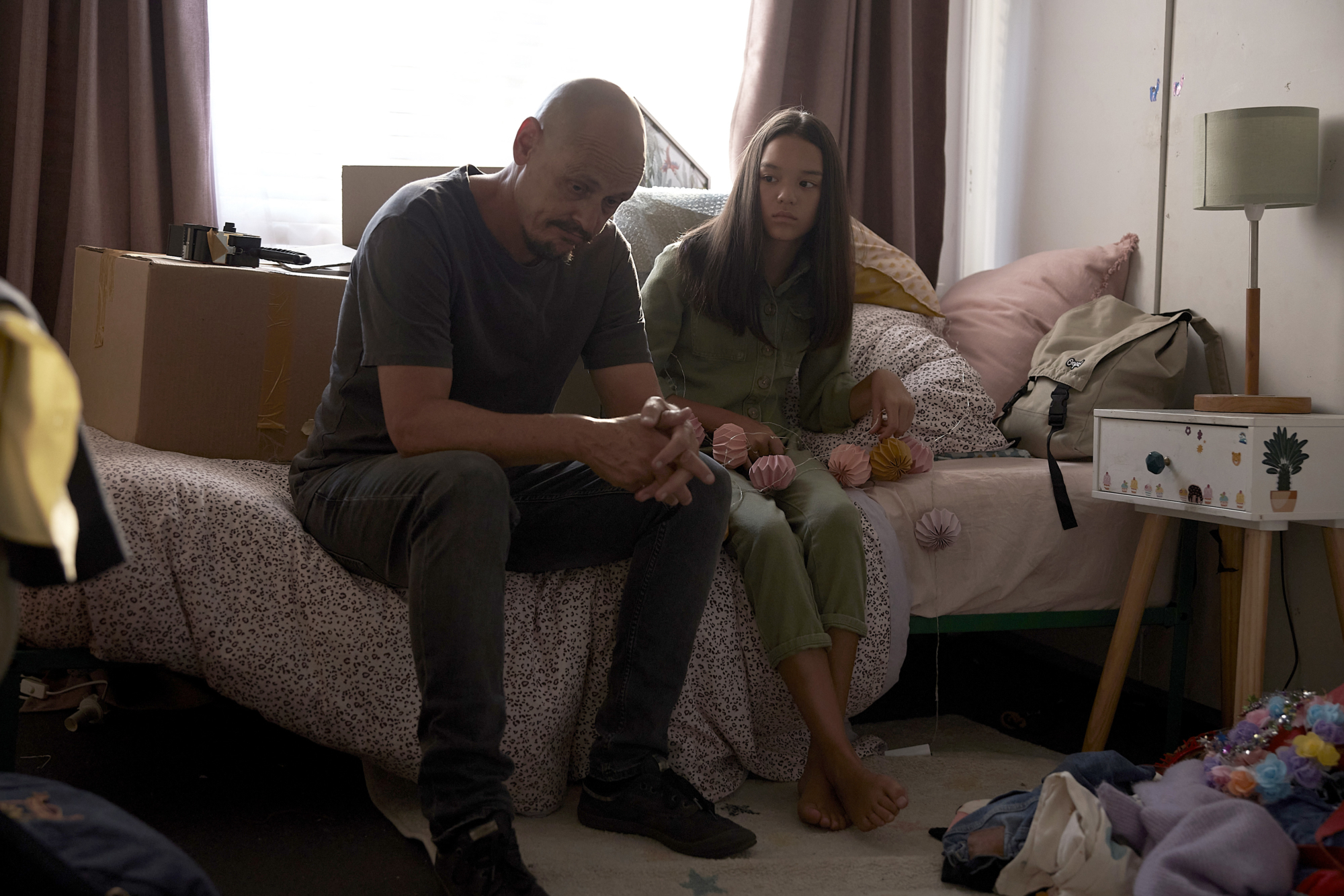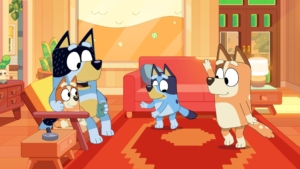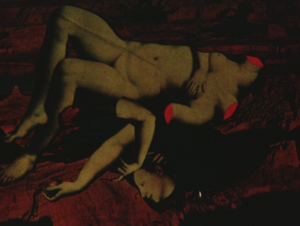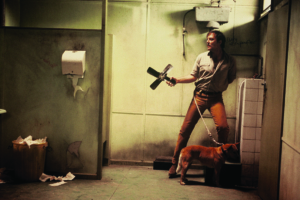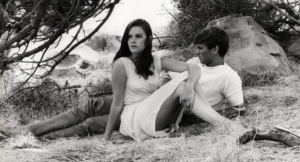It’s always the good men who do the most harm in the world.
– Henry Adams[1]Henry Adams, quoted in Jacob E Cooke, ‘Chats with Henry Adams’, American Heritage, vol. 7, no. 1, December 1955, available at <https://www.americanheritage.com/chats-henry-adams>, accessed 4 March 2022.
The problem is not that there is evil in the world. The problem is that there is good. Because otherwise, who would care?
– VM Varga (David Thewlis), Fargo Season 3, Episode 9
Hitmen have traditionally lurked in the shadows of the mainstream. Although these solitary figures have ventured into the light over the years,[2]Examples of popular films revolving around hitman protagonists include Le Samouraï (Jean-Pierre Melville, 1967), The Mechanic (Michael Winner, 1972), La Femme Nikita (Luc Besson, 1990), Leon: The Professional (Besson, 1994), Grosse Pointe Blank (George Armitage, 1997), In Bruges (Martin McDonagh, 2008) and John Wick (Chad Stahelski, 2014). they’ll typically strike without warning and quickly retreat back into the margins. The year 2018, however, saw the emergence of three television series in which hired killers figured centrally: Barry, Killing Eve and Mr Inbetween. While the first two (respectively, UK- and US-produced) shows have achieved international renown, the third, criminally underseen,[3]See Karl Quinn, ‘“It’s a Word-of-mouth Show’: The Cult Hit Series You’re Missing Out On’, The Sydney Morning Herald, 10 July 2021, <https://www.smh.com.au/culture/tv-and-radio/cult-series-mr-inbetween-might-end-this-week-but-word-of-mouth-will-give-it-a-long-life-20210708-p587zj.html>, accessed 8 March 2022. The series has not entirely gone without recognition, winning several awards (including Ryan’s dual Best Lead Actor in a Television Drama gongs at the 2019 and 2021 AACTA Awards) as well as praise in the international press; see, for example, Tim Goodman, ‘Critic’s Notebook: FX’s Australian Import Mr Inbetween Is One of 2018’s Best Shows So Far’, The Hollywood Reporter, 24 September 2018, <https://www.hollywoodreporter.com/tv/tv-news/critics-notebook-fxs-australian-import-mr-inbetween-is-one-2018s-best-shows-far-1146132/>, accessed 8 March 2022. Australian production is superior to either of them.
The reason Mr Inbetween is better than its Emmy-winning counterparts is hiding in plain sight. A remarkable collaboration between writer Scott Ryan and director Nash Edgerton,[4]The series’ concept and main character originated in a student film that Ryan began developing in the late 1990s while he was at RMIT, and which he later recut and released as the feature mockumentary The Magician in 2005. From there, the series had a tortuous path to fruition, being knocked back by several networks before finally being picked up by US channel FX in 2016. See ibid.; and Tom Ryan, ‘Mr Inbetween, the Little Show That Could, Is Australian TV Folklore’, The Sydney Morning Herald, 13 June 2021, <https://www.smh.com.au/culture/tv-and-radio/mr-inbetween-the-little-show-that-could-is-australian-tv-folklore-20210609-p57zkv.html>, accessed 8 March 2022. For more on The Magician, see Phillip Cenere, ‘Faking It with The Magician’, Metro, no. 146/147, 2005, pp. 28–31. the show doesn’t try to justify its violence via dramatic conventions (as per Killing Eve) or attempt to resolve conflicted attitudes towards violent acts through contrasting environments (as Barry does with its community theatre setting). Rather, the hard-to-categorise series situates itself within and navigates what may be called the ‘magnitude gap’[5]The ‘magnitude gap’ specifically relates to the different ways in which perpetrators and victims tend to think about violent acts, given the greater impact these usually have on the latter group. See Roy F Baumeister, Evil: Inside Human Violence and Cruelty, Henry Holt and Company, New York, 1996, p. 52. or ‘moralisation gap’[6]An alternative term employed by psychologist Steven Pinker. Although Pinker follows Baumeister’s characterisation of the ‘gap’, Pinker’s rephrasing has since proliferated in the literature. See Pinker, The Better Angels of Our Nature: Why Violence Has Declined, Penguin, London, 2012, p. 1015. in real life – specifically, the gap in perception, engendered by self-serving narratives, that gives meaning to concepts like ‘good’ and ‘evil’.

Moralisation – the process whereby personal biases, preferences and perspectives are turned into value systems or action orientations[7]See Joshua J Rhee, Chelsea Schein & Brock Bastian, ‘The What, How, and Why of Moralization: A Review of Current Definitions, Methods, and Evidence in Moralization Research’, Social and Personality Psychology Compass, vol. 13, no. 12, December 2019, pp. 1–14. – involves more than dividing the world into good and bad people. Moralisation can also create interpersonal conflict by ascribing different categories of moral relevance or significance to human motives and actions – specifically, where the perceived harms or virtues of cruel and violent behaviour are magnified or minimised according to the resulting empathy gaps[8]See Jennifer Gutsell & Michael Inzlicht, ‘Intergroup Differences in the Sharing of Emotive States: Neural Evidence of an Empathy Gap’, Social Cognitive and Affective Neuroscience, vol. 7, no. 5, June 2012, pp. 596–603; and Emile G Bruneau, Mina Cikara & Rebecca Saxe, ‘Minding the Gap: Narrative Descriptions About Mental States Attenuate Parochial Empathy’, PLOS ONE, vol. 10, no. 10, 2015. between individuals and groups.[9]The documentaries The Act of Killing (Joshua Oppenheimer, 2012) and The Look of Silence (Oppenheimer, 2014) – about the mass murder and torture of communists and ethnic minorities committed in Indonesia from 1965 to 1966 – provide a harrowing account of how the perpetrators and the survivors deal with their memories of these atrocities. Particularly telling is that, in morally justifying these massacres by appealing to the greater good, the perpetrators choose to see themselves through the lens of genre movies (such as gangster films, westerns and musicals). See Anthony Carew, ‘Horror, History, Healing: The Act of Killing, The Look of Silence and the Indonesian Genocide’, Screen Education, no. 87, 2017, pp. 24–31. Psychologist Paul Bloom sums up ‘the tendency to diminish the severity of our own acts relative to the acts of others’ accordingly:
The moralization gap leads to a natural escalation of reprisals, both at the everyday level – disputes among friends, siblings, spouses – and at the level of international conflict. You do something nasty to me, and this seems so much nastier (more significant, unjustified, just meaner) to me than it does to you. And when I retaliate in what I see as an appropriate and measured way, it seems disproportionate to you, and you respond accordingly, and so on […] It’s a wonder we don’t all end up killing each other.[10]Paul Bloom, Against Empathy: The Case for Rational Compassion, HarperCollins, London, 2016, pp. 250–1. Witness the way mainstream film and television attempt to engage (trigger, justify) our own violent impulses in a relatively safe environment. Indeed, popular culture is typically the place where the moralisation gap is kept wide open: it is where viewers can become morally implicated or compromised by another person’s violent actions. If we witness, say, the murder of someone’s friends or family members on screen (murder is evil!), we’ll want retribution in the form of murder (murder is also good!), even though that by definition will involve the killing of someone else’s friend or family member.
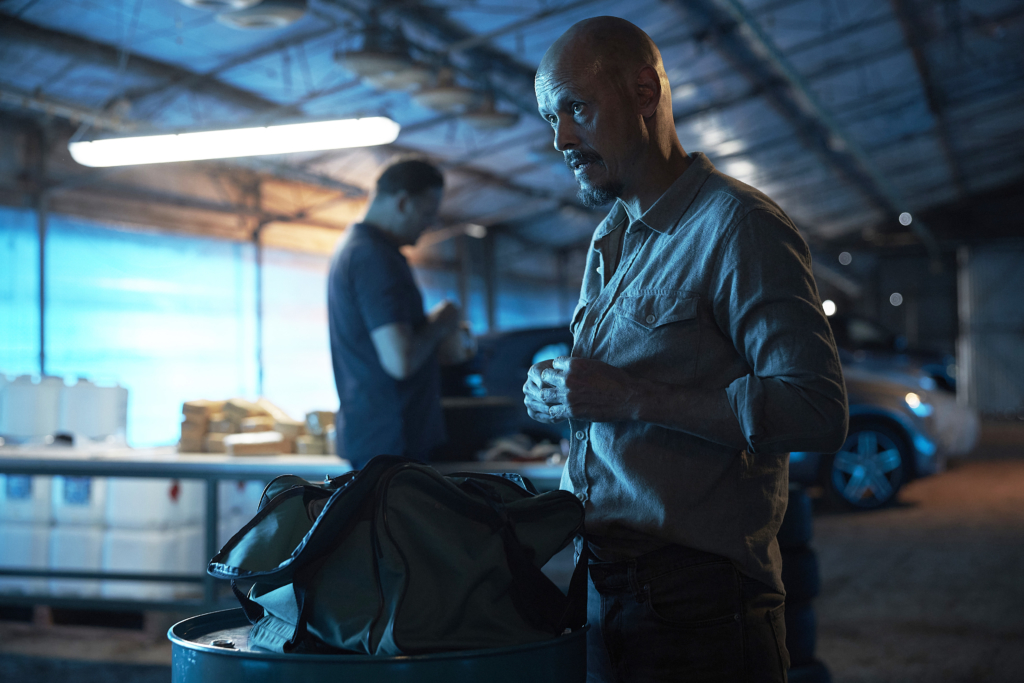
Mr Inbetween navigates this gap by moving between delineated moral and/or social boundaries: the apparently bad (hit)man is also a good father and friend. The series’ masterful tonal balance mixes light and dark to create (and inhabit) grey areas and enable safe passage between morally distinct worlds. Comedy, drama, tenderness and brutality are spread across its spectrum and measure out permeable values and meaning.[11]The series appears to take its title from the lyrics of ‘Ac-Cent-Tchu-Ate the Positive’, a song – written by Johnny Mercer and Harold Arlen in 1944 and recorded by many others since – about the importance of looking on the bright side of life: ‘You’ve got to accentuate the positive / Eliminate the negative / Latch on to the affirmative / Don’t mess with Mister In-Between’. The original Mercer recording makes it very clear, however, that the song is not so much about optimism as it is a ‘sermon’ about good and evil; the singer announces from the outset that the song’s ‘topic will be sin’, and that he will be ‘reviewing the attitude of doin’ right’, since, when it comes to the moralisation gap that the song explicitly endorses, there can be no in-between. Mr Inbetween reminds us that the criminal underworld attempts to police itself with an ethical system: ‘bad’ characters are regularly beaten or killed for supposedly moral reasons. The series also entertains the idea that civil society might need hardened criminals in order to restore the balance between ‘good’ and ‘evil’ (or moral law[12]See John Deigh, An Introduction to Ethics, Cambridge University Press, Cambridge, UK, 2010, pp. 123–56.). An ethic of reciprocity – usually expressed as the golden rule[13]Exemplified in the Biblical exhortation to ‘do unto others as you would have others do unto you’. Mathematician Frank Harary noted a structural resemblance between the golden rule and the ostensibly more punitive Old Testament concept of ‘an eye for an eye’; see Harary, ‘Variations on the Golden Rule’, Behavioral Science, vol. 27, no. 2, 1982, pp. 155–61. – leads to the natural escalation of reprisals culminating in many people killing one another. Consequently, one of the most striking aspects of Mr Inbetween is its tacit awareness that the source of evil is the moralisation gap, or moral reasoning itself.[14]See, for example, Alan Page Fiske & Tage Shakti Rai, Virtuous Violence: Hurting and Killing to Create, Sustain, End, and Honor Social Relationships, Cambridge University Press, Cambridge, 2015; and Richard Wrangham, The Goodness Paradox: The Strange Relationship Between Virtue and Violence in Human Evolution, Knopf Doubleday, New York, 2019.
Over the course of three short seasons – in total, twenty-six episodes of approximately thirty minutes each – Mr Inbetween traverses regions populated by indelible characters and situations. Ryan and Edgerton show considerable aptitude for expansive world-building across small scenes, allowing viewers to see different worlds through the eyes of a man struggling to keep them apart. On the one side of the divide, we see the laconic Ray (Ryan) interacting with his young daughter, Brittany (Chika Yasumura); sick brother, Bruce (Nicholas Cassim); new girlfriend, Ally (Brooke Satchwell); best friend and partner in crime Gary (Justin Rosniak); exasperated anger-management therapist Peter (David Michôd); and go-between Freddy (Damon Herriman). On the other, we witness him doing ‘hits’ of various kinds (as strip club bouncer, debt collector and executioner) and interacting with characters such as Gary and Freddy, rival hitman Dave (Matt Nable), child trafficker Tim (Henry Nixon), suspected paedophile and child killer Dennis (Paul Caesar), bikie gang leaders Vinnie (Kieran Darcy-Smith) and Alex (Josh McConville), aspiring crime boss Graham (Ian Roberts), drug runner and potential love interest Zoe (Emily Barclay), and kingpin Rafael (Jeremy Sims). Although the hardworking Ray labours under the delusion that it is possible to keep his worlds separate, their boundaries become increasingly porous.
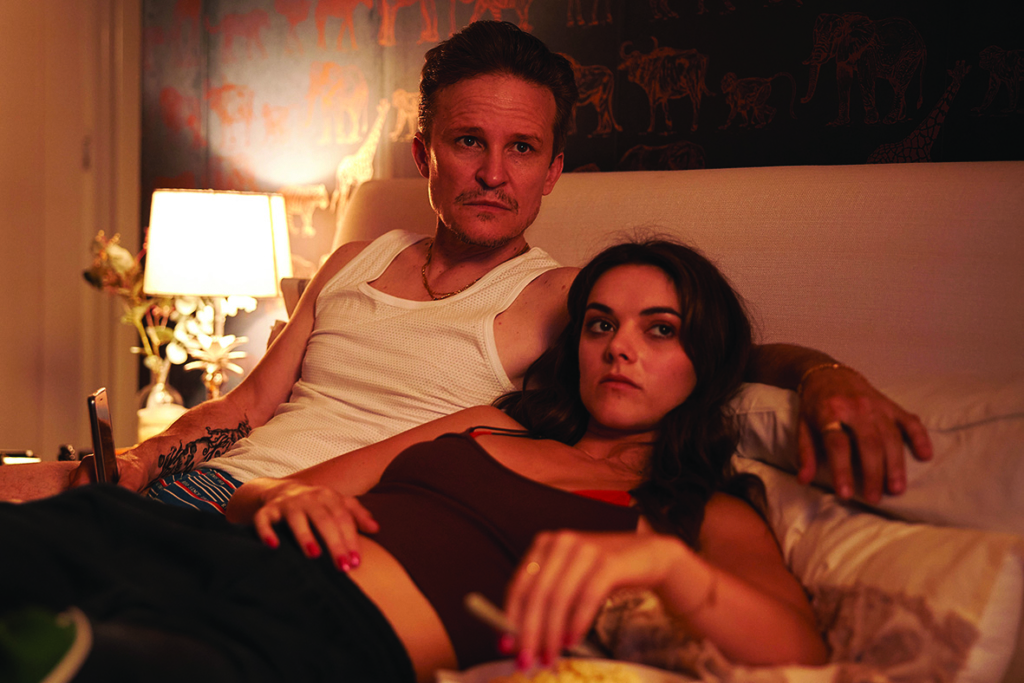
Bruce, for example, stricken by motor neurone disease, asks to be put on Ray’s hit list, and their relationship culminates in a mercy killing. Gary frequently asks Ray to metaphorically take a bullet for him (by, say, lying to Gary’s angry wife about who really owns and masturbates to the ‘Golden Shower Power’ pornographic video at their house). Dave, who is initially hired to help kill Ray, ends up befriending him and assisting him in killing many other people instead – if only because the former is about to become a dad and owes Ray his life after the latter gets the better of him. Consequently, one of the show’s many achievements lies in the way it tests the moral limits of empathy.
Empathic understanding, or ‘attunement’ – the ability to place ourselves in another person’s shoes and see the world from their perspective – is typically seen as a morally desirable and altruistic disposition.[15]See Heidi L Maibom (ed.), Empathy and Morality, Oxford University Press, Oxford, UK & New York, 2014. Significantly, empathy was traditionally viewed as aesthetic in character,[16]The concept of empathy (Einfühlung, or ‘infeeling’) originated in German aesthetics and found its way into moral discourse. Originally, the term referred to the extension of subjective minds into external objects and events, before later being used to describe the projection of that subjectivity into others’ minds. See Susan Lanzoni, Empathy: A History, Yale University Press, New Haven, CT & London, 2018, pp. 21–67. and immersive filmmaking in particular has hinged on audiences’ capacity to ‘feel in’.[17]See Sarah Jones & Steve Dawkins, ‘Walking in Someone Else’s Shoes: Creating Empathy in the Practice of Immersive Film’, Media Practice and Education, vol. 19, no. 3, 2018, pp. 298–312. For its part, Mr Inbetween exhibits an understanding that empathy is inherently amoral, potentially opportunistic and subject to the vagaries of perspective-taking: it can justify violence against perceived enemies as well as helping others in need.[18]See Diana Kwon, ‘The Limits of Empathy’, The Psychologist, vol. 30, January 2017, pp. 28–32, available at <https://thepsychologist.bps.org.uk/volume-30/january-2017/limits-empathy>, accessed 4 March 2022; and Fritz Breithaupt, The Dark Sides of Empathy, Cornell University Press, Ithaca, NY & London, 2019. Characters threaten or mobilise one another because they can see a (moral or physical) injury from another person’s perspective, or readily manipulate one another by appealing to (and exploiting) their points of view. If the series has a character arc or narrative trajectory, it is the corrosive effect that seemingly virtuous violence has on all of Ray’s relationships. Ray gets caught between his two worlds because, for him, empathy has become a double-edged sword.
Mr Inbetween exhibits an understanding that empathy is inherently amoral, potentially opportunistic and subject to the vagaries of perspective-taking: it can justify violence against perceived enemies as well as helping others in need.
The six-episode first season is relatively straightforward. The primary goal is to build rapport with the audience via a careful calibration of humour, romance, tenderness, violence and menace. The central question seems to be: Is Ray a good person or a bad person? The answer, of course, lies somewhere in between – he’s neither, or both. The series’ rapid movements between moral tones and dramatic sensibilities might alarm wary viewers; one of several seemingly heavy-handed juxtapositions early on sees Ray suddenly pushing a junkie to his (presumed) death before ferrying a beetle to safety in the shower in the next scene. We’re also introduced to his cute daughter, sick brother, quirky friend and lovely girlfriend in quick succession. Ryan and Edgerton appear to be making a threatening individual relatable by osmosis, or at least via an assimilation of other people’s characteristics and situations. The writing, performances and direction feel so down-to-earth and lived-in, however, that we’re quickly disarmed.
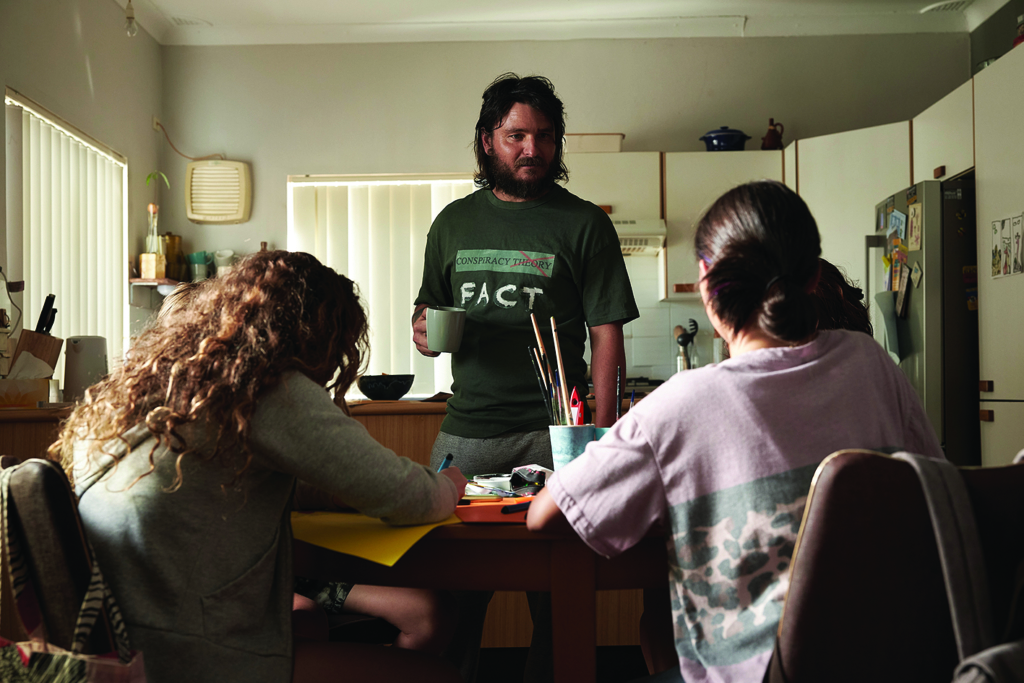
We also soon learn that Mr Inbetween’s protagonist tries to order his worlds according to a respect-oriented value system. Ray believes that people should treat others how they would like to be treated – and that they can expect to be mistreated if they don’t show respect in turn. The only problem, of course, is that mutual desire for respect and understanding can also be a source of interpersonal conflict. As many people are competing for the same resources (status, rank, money, deference, validation), organised criminals and ordinary citizens alike can find themselves caught in a vicious circle. Consequently, many angry men (including Ray) threaten to become their own worst enemy – as the series makes evident when Ray ends up in court-mandated therapy sessions alongside child- and wife-beaters, or ultimately digs his own grave by not knowing his place in the underworld.
Mr Inbetween digs deeper into its characters and themes over the next two seasons. The series consolidates the impression that Ray is an ‘injustice collector’: someone who holds on to and magnifies perceived slights and wrongdoings.[19]See Mary Ellen O’Toole, ‘The Dangerous Injustice Collector: Behaviors of Someone Who Never Forgets, Never Forgives, Never Lets Go, and Strikes Back!’, Violence and Gender, vol. 1, no. 3, 2014, pp. 97–9. As a childhood victim of physical abuse (at home and school), he is determined to recover any respect that he feels is owed or overdue. Ray remains particularly attuned to the mistreatment of women and children – presumably because he witnessed his embattled father (a war veteran suffering from post-traumatic stress disorder) take out his anger on his defenceless mother. Indeed, Ray’s awareness of injustice appears to be the main reason why he can work as a hitman: virtue and violence have become intertwined for him ever since he finally learned to hit back. Ray’s ability to put himself in the shoes of other aggrieved people has made him the ideal hitman; any perceived injustice will (literally) trigger him. His empathetic attitude, however, is also his biggest character flaw: he simply takes it as given that someone must have good reason for wanting another person hurt or killed. Ray’s capacity to see the world from another person’s perspective – from the perspective of someone who feels disrespected and demands recompense – simultaneously prevents him from seeing the world from the perspective of the people he hurts, people who may need to be compensated in turn. Ray’s masculine notion of accountability compels him to see grievances through the moral lens of retribution, and himself as an agent who can help balance the scales (or books) between people who find themselves on the wrong side of the moralisation gap.
Mr Inbetween nonetheless calls into question Ray’s belief that he is providing a community service. Although the former soldier remains committed to the idea of virtuous violence – in his view, his victims all ‘had it coming to them’ – the question becomes: If the rules of engagement are self-serving or arbitrary, which side of the moral divide is he ultimately on? And how can he justify his own actions when so many people get caught in the crossfire?

Throughout the series, the theme of intergenerational trauma constantly lurks in the shadows. Ray’s learned maladaptive coping style (in which violence is used for conflict resolution or problem-solving) inevitably becomes self-destructive, and his traumatic upbringing will be passed on to subsequent generations of angry, traumatised people. Ray’s belief in just deserts collides with the realisation that he too might be on the receiving end of a deserving punishment, and that many innocent bystanders (like his daughter, girlfriend and victims’ family members) are also punished by his actions. Over the next twenty episodes, Ray’s self-respect is what takes the biggest hit; faced with the mounting death toll and collateral damage he has brought about, the hitman becomes increasingly threatened by the prospect of having to live with himself.
Mr Inbetween bridges the moralisation gap by moving between competing points of view. Instead of developing a fixed orientation towards Ray’s actions, our moral perspective can shift between characters and scenes. Viewers may, for example, feel the considerable love and warmth present in the scene in which Ray stages a unicorn sighting for his daughter in the Blue Mountains. And, by being placed in Ray’s shoes, they may just as likely subsequently see red when he pushes his girlfriend’s smarmy brother Trent (Edgerton) through a glass door over a unicorn-related dispute. Most importantly, they are likely to understand why abuse survivor Ally suddenly sees Ray through frightened eyes after this act of violence. We already know that Ray would like to think that he would never hurt a woman as a matter of principle, and that his motivation was to protect his dejected daughter during a Secret Santa exchange, but Ally’s alarm towards Ray’s sudden eruption into violence is nonetheless respected and legitimised. Indeed, the show suggests that Trent and Ray both had it coming – and that Ray only ends up hurting himself when Ally decides to stop seeing him.
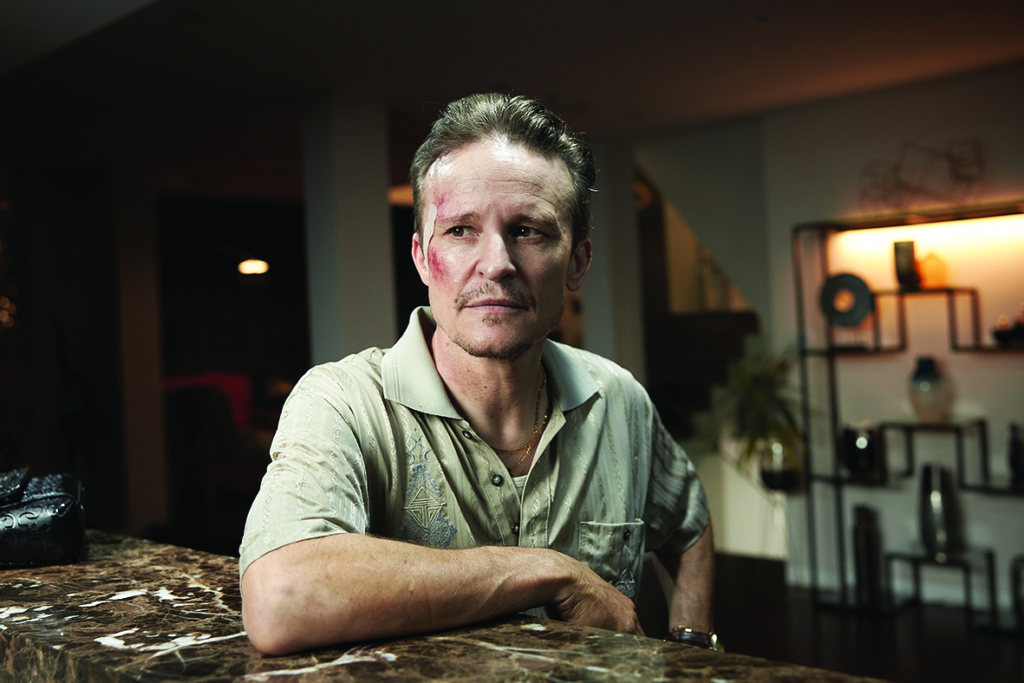
Accordingly, Ray is generally portrayed throughout Mr Inbetween as an ambivalent figure. Consider the scene in which he goes on a murderous rampage with a large trowel, for instance. Many viewers are likely to sympathise with the moral outrage he feels towards the people who kidnapped the child left in his care; but this sequence also allows us to feel their terror at being hacked to death by a crazed man in his underpants, and encourages us to ask ourselves whether their punishment was overkill.
We subsequently witness another morally ambivalent development. Ray is hired to kill someone who has mistaken him for a good friend, and is able to maintain this pretence right up until he kidnaps his victim and puts a bullet in the back of his head. Ray’s willingness to kill Vinnie complicates our feelings towards him. If they appear to genuinely like each other, why is it so easy for Ray to kill his old mate? The answer is that his friend’s murder is nothing personal: having gone soft in his middle age, the bikie gang leader has become the victim of an internal power play.
The final season begins with Ray’s awareness that he too might be going soft, and be on his way out. He has been feeling adrift since the loss of his girlfriend and brother, and is starting to feel conflicted about his propensity for violence. Indeed, Ray finds himself feeling sorry for one of the guys he killed in a botched attempt to steal a cache of weapons from him. As the gang’s paternal figurehead lays dying, Ray shares Graham’s sense of responsibility for getting his ‘boys’ killed after ‘biting off more than they could chew’. At the end of the season, the moving death scene is mirrored when Ray sees that he has now gotten one of his own ‘boys’ killed, and left Dave’s new son without a father. Ray also sees his own possible future in this act of vengeance; he recognises that his own child may lose her father in similarly violent circumstances.

By this stage, Ray has been alerted to the possibility that his daughter might even get herself killed, having discovered that an inquisitive Brittany found and played with his loaded gun at home – the over-protective father has now become a threat to his own daughter. And while Ray might be able to handle hardened criminals, nothing has prepared him for the horrors of parenting a teenage girl. He struggles to keep his brief imprisonment for assaulting a pedestrian a secret from Brittany, and feels threatened by the fact that she is developing an interest in bad boys and illicit drugs. Ray doesn’t know what’s worse: the fact that she’s started to test his moral limits by disrespecting her old man, or that he can’t kill all the boyfriends who might end up hurting her.
Eventually, Ray is forced to mind the (moralisation) gap. Having developed feelings for Zoe and flirted with the possibility of finding happiness with someone on the wrong side of the law, he must come to terms with her violent death at the hands of her panicked crime boss after a drug run goes horribly wrong. Mr Inbetween ends with the hitman getting his just deserts: Ray banishes himself to the margins, where, at last, he might do no more harm.
Endnotes
| 1 | Henry Adams, quoted in Jacob E Cooke, ‘Chats with Henry Adams’, American Heritage, vol. 7, no. 1, December 1955, available at <https://www.americanheritage.com/chats-henry-adams>, accessed 4 March 2022. |
|---|---|
| 2 | Examples of popular films revolving around hitman protagonists include Le Samouraï (Jean-Pierre Melville, 1967), The Mechanic (Michael Winner, 1972), La Femme Nikita (Luc Besson, 1990), Leon: The Professional (Besson, 1994), Grosse Pointe Blank (George Armitage, 1997), In Bruges (Martin McDonagh, 2008) and John Wick (Chad Stahelski, 2014). |
| 3 | See Karl Quinn, ‘“It’s a Word-of-mouth Show’: The Cult Hit Series You’re Missing Out On’, The Sydney Morning Herald, 10 July 2021, <https://www.smh.com.au/culture/tv-and-radio/cult-series-mr-inbetween-might-end-this-week-but-word-of-mouth-will-give-it-a-long-life-20210708-p587zj.html>, accessed 8 March 2022. The series has not entirely gone without recognition, winning several awards (including Ryan’s dual Best Lead Actor in a Television Drama gongs at the 2019 and 2021 AACTA Awards) as well as praise in the international press; see, for example, Tim Goodman, ‘Critic’s Notebook: FX’s Australian Import Mr Inbetween Is One of 2018’s Best Shows So Far’, The Hollywood Reporter, 24 September 2018, <https://www.hollywoodreporter.com/tv/tv-news/critics-notebook-fxs-australian-import-mr-inbetween-is-one-2018s-best-shows-far-1146132/>, accessed 8 March 2022. |
| 4 | The series’ concept and main character originated in a student film that Ryan began developing in the late 1990s while he was at RMIT, and which he later recut and released as the feature mockumentary The Magician in 2005. From there, the series had a tortuous path to fruition, being knocked back by several networks before finally being picked up by US channel FX in 2016. See ibid.; and Tom Ryan, ‘Mr Inbetween, the Little Show That Could, Is Australian TV Folklore’, The Sydney Morning Herald, 13 June 2021, <https://www.smh.com.au/culture/tv-and-radio/mr-inbetween-the-little-show-that-could-is-australian-tv-folklore-20210609-p57zkv.html>, accessed 8 March 2022. For more on The Magician, see Phillip Cenere, ‘Faking It with The Magician’, Metro, no. 146/147, 2005, pp. 28–31. |
| 5 | The ‘magnitude gap’ specifically relates to the different ways in which perpetrators and victims tend to think about violent acts, given the greater impact these usually have on the latter group. See Roy F Baumeister, Evil: Inside Human Violence and Cruelty, Henry Holt and Company, New York, 1996, p. 52. |
| 6 | An alternative term employed by psychologist Steven Pinker. Although Pinker follows Baumeister’s characterisation of the ‘gap’, Pinker’s rephrasing has since proliferated in the literature. See Pinker, The Better Angels of Our Nature: Why Violence Has Declined, Penguin, London, 2012, p. 1015. |
| 7 | See Joshua J Rhee, Chelsea Schein & Brock Bastian, ‘The What, How, and Why of Moralization: A Review of Current Definitions, Methods, and Evidence in Moralization Research’, Social and Personality Psychology Compass, vol. 13, no. 12, December 2019, pp. 1–14. |
| 8 | See Jennifer Gutsell & Michael Inzlicht, ‘Intergroup Differences in the Sharing of Emotive States: Neural Evidence of an Empathy Gap’, Social Cognitive and Affective Neuroscience, vol. 7, no. 5, June 2012, pp. 596–603; and Emile G Bruneau, Mina Cikara & Rebecca Saxe, ‘Minding the Gap: Narrative Descriptions About Mental States Attenuate Parochial Empathy’, PLOS ONE, vol. 10, no. 10, 2015. |
| 9 | The documentaries The Act of Killing (Joshua Oppenheimer, 2012) and The Look of Silence (Oppenheimer, 2014) – about the mass murder and torture of communists and ethnic minorities committed in Indonesia from 1965 to 1966 – provide a harrowing account of how the perpetrators and the survivors deal with their memories of these atrocities. Particularly telling is that, in morally justifying these massacres by appealing to the greater good, the perpetrators choose to see themselves through the lens of genre movies (such as gangster films, westerns and musicals). See Anthony Carew, ‘Horror, History, Healing: The Act of Killing, The Look of Silence and the Indonesian Genocide’, Screen Education, no. 87, 2017, pp. 24–31. |
| 10 | Paul Bloom, Against Empathy: The Case for Rational Compassion, HarperCollins, London, 2016, pp. 250–1. Witness the way mainstream film and television attempt to engage (trigger, justify) our own violent impulses in a relatively safe environment. Indeed, popular culture is typically the place where the moralisation gap is kept wide open: it is where viewers can become morally implicated or compromised by another person’s violent actions. If we witness, say, the murder of someone’s friends or family members on screen (murder is evil!), we’ll want retribution in the form of murder (murder is also good!), even though that by definition will involve the killing of someone else’s friend or family member. |
| 11 | The series appears to take its title from the lyrics of ‘Ac-Cent-Tchu-Ate the Positive’, a song – written by Johnny Mercer and Harold Arlen in 1944 and recorded by many others since – about the importance of looking on the bright side of life: ‘You’ve got to accentuate the positive / Eliminate the negative / Latch on to the affirmative / Don’t mess with Mister In-Between’. The original Mercer recording makes it very clear, however, that the song is not so much about optimism as it is a ‘sermon’ about good and evil; the singer announces from the outset that the song’s ‘topic will be sin’, and that he will be ‘reviewing the attitude of doin’ right’, since, when it comes to the moralisation gap that the song explicitly endorses, there can be no in-between. |
| 12 | See John Deigh, An Introduction to Ethics, Cambridge University Press, Cambridge, UK, 2010, pp. 123–56. |
| 13 | Exemplified in the Biblical exhortation to ‘do unto others as you would have others do unto you’. Mathematician Frank Harary noted a structural resemblance between the golden rule and the ostensibly more punitive Old Testament concept of ‘an eye for an eye’; see Harary, ‘Variations on the Golden Rule’, Behavioral Science, vol. 27, no. 2, 1982, pp. 155–61. |
| 14 | See, for example, Alan Page Fiske & Tage Shakti Rai, Virtuous Violence: Hurting and Killing to Create, Sustain, End, and Honor Social Relationships, Cambridge University Press, Cambridge, 2015; and Richard Wrangham, The Goodness Paradox: The Strange Relationship Between Virtue and Violence in Human Evolution, Knopf Doubleday, New York, 2019. |
| 15 | See Heidi L Maibom (ed.), Empathy and Morality, Oxford University Press, Oxford, UK & New York, 2014. |
| 16 | The concept of empathy (Einfühlung, or ‘infeeling’) originated in German aesthetics and found its way into moral discourse. Originally, the term referred to the extension of subjective minds into external objects and events, before later being used to describe the projection of that subjectivity into others’ minds. See Susan Lanzoni, Empathy: A History, Yale University Press, New Haven, CT & London, 2018, pp. 21–67. |
| 17 | See Sarah Jones & Steve Dawkins, ‘Walking in Someone Else’s Shoes: Creating Empathy in the Practice of Immersive Film’, Media Practice and Education, vol. 19, no. 3, 2018, pp. 298–312. |
| 18 | See Diana Kwon, ‘The Limits of Empathy’, The Psychologist, vol. 30, January 2017, pp. 28–32, available at <https://thepsychologist.bps.org.uk/volume-30/january-2017/limits-empathy>, accessed 4 March 2022; and Fritz Breithaupt, The Dark Sides of Empathy, Cornell University Press, Ithaca, NY & London, 2019. |
| 19 | See Mary Ellen O’Toole, ‘The Dangerous Injustice Collector: Behaviors of Someone Who Never Forgets, Never Forgives, Never Lets Go, and Strikes Back!’, Violence and Gender, vol. 1, no. 3, 2014, pp. 97–9. |
